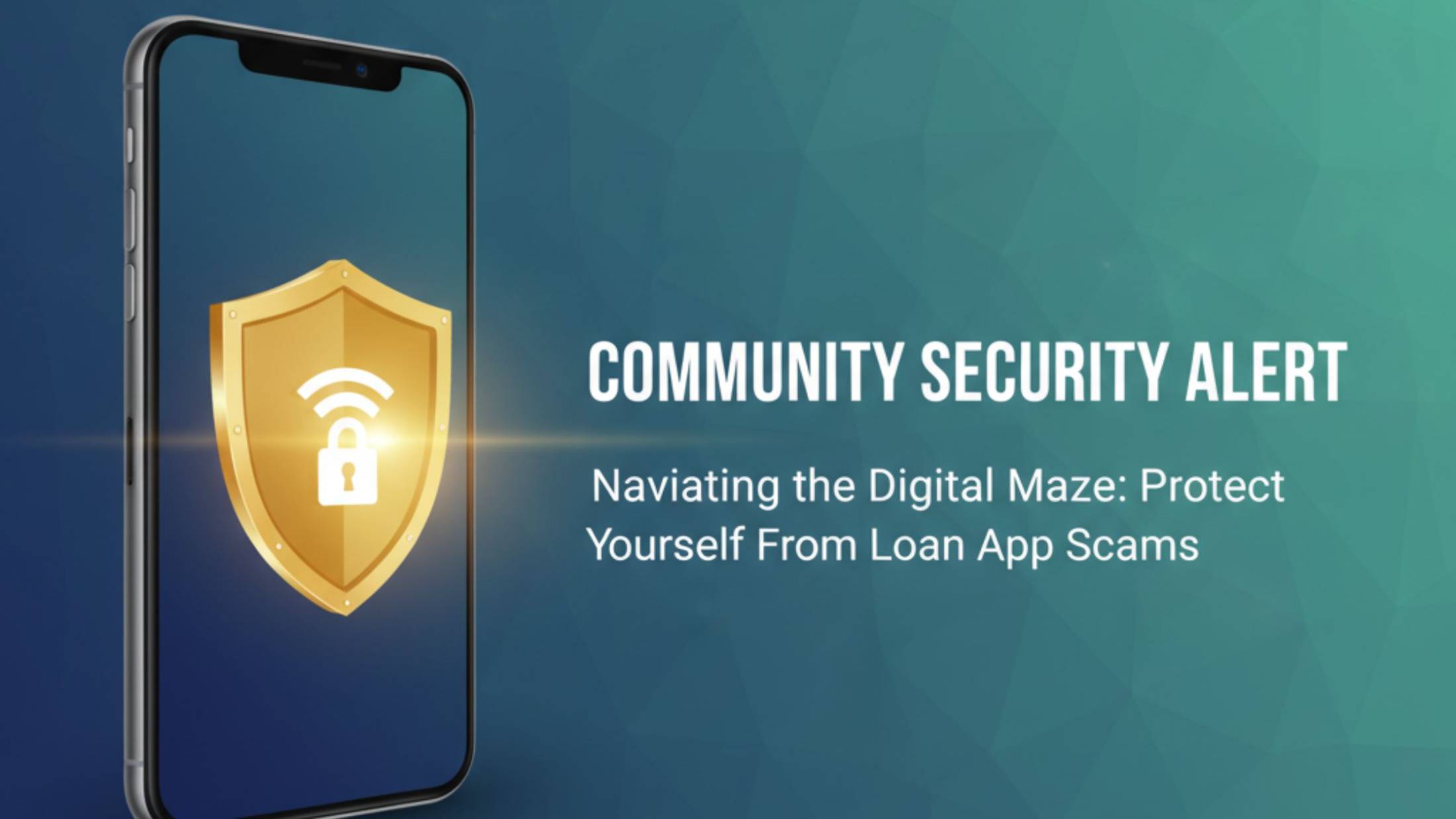Digital Lending & Consumer Awareness · 5 min read
How to Educate Communities About Loan App Frauds in India
With the rise of digital lending in India, loan app frauds are a growing concern. This blog explores how financial literacy, government action, and community awareness can help people identify and prevent such scams.

Over the past few years, India has witnessed tremendous growth in digital lending platforms offering instant loans with minimal documentation. While this convenience has undoubtedly benefited millions, it has also paved the way for a surge in fraudulent loan applications, preying on unsuspecting borrowers.
These deceptive apps often charge exorbitant interest rates, misuse personal data, and employ aggressive recovery tactics such as harassment and intimidation. Hence, raising awareness about such loan app frauds has become both a financial security imperative and an educational priority.
Importance of Financial Literacy
The foundation of protection against loan app scams lies in financial literacy. Many victims of these frauds lack a clear understanding of legitimate banking procedures, RBI guidelines, and the difference between registered Non-Banking Financial Companies (NBFCs) and unregistered entities.
As per the Reserve Bank of India (RBI), only banks and NBFCs registered with the RBI are legally permitted to lend money in India. However, fake loan apps often disguise themselves as licensed lenders, luring borrowers with false promises and quick approvals.
Educating people through community workshops, digital campaigns, and regional-language content can help them identify warning signs — such as apps requesting unnecessary permissions, instant approvals without verification, or advance payments.
When individuals learn to verify a lender’s authenticity and analyze loan terms carefully, they significantly reduce their chances of becoming victims of digital loan frauds.
Government Awareness Campaigns
To curb digital lending scams, the Government of India, Reserve Bank of India (RBI), and Ministry of Electronics and Information Technology (MeitY) have launched several initiatives.
The RBI’s Digital Lending Guidelines (2022) mandate that loan disbursements and repayments must occur directly between the borrower and the bank, eliminating third-party interference.
Furthermore, state cybercrime departments and the Ministry of Home Affairs have introduced social media awareness drives, encouraging citizens to report fraudulent apps via the National Cyber Crime Reporting Portal (www.cybercrime.gov.in).
Campaigns like “RBI Kehta Hai” and “Cyber Suraksha Bharat” have also empowered the public to adopt safe online financial practices and stay vigilant while using lending apps.
Role of Schools and Colleges
Early financial education plays a vital role in building responsible digital borrowers. Educational institutions — schools and colleges alike — must integrate financial literacy modules into their curriculum to help students understand money management and digital safety.
Through these sessions, students can learn how online lending works, why reading terms and conditions matters, and how to differentiate between genuine and fake loan platforms.
Guest lectures by bankers, RBI officials, and cybersecurity professionals can further enhance awareness among young users. As smartphone usage surges among India’s youth, early education can prevent misuse of loan apps and protect future borrowers.
NGO and Community Efforts
Non-Governmental Organizations (NGOs) and local community groups serve as critical connectors in reaching vulnerable populations, especially in rural and semi-urban regions where digital literacy levels remain low.
NGOs focused on financial inclusion can organize village-level awareness sessions, distribute educational pamphlets, and offer counseling to fraud victims.
Community leaders, self-help groups (SHGs), and microfinance institutions can further spread verified information about safe borrowing practices and government helplines.
Collaboration between NGOs, panchayats, and district administrations can significantly minimize the reach of fraudulent loan schemes even in remote areas.
Steps for Individuals to Spread Awareness
Each individual can play a role in fighting loan app frauds. Simple actions can make a huge difference, such as:
Sharing verified information on social media
Reporting fake apps to authorities
Educating friends and family about checking the RBI’s list of registered NBFCs
Downloading apps only from official app stores
Avoiding sharing personal details (like PAN or Aadhaar) with unverified lenders
Reporting online harassment or extortion to cybercrime portals
By taking these small yet impactful steps, individuals can create a ripple effect of awareness within their communities.
Conclusion
Loan app frauds represent a rapidly growing digital threat in India, exploiting gaps in financial literacy and regulatory awareness. While government policies and RBI guidelines are essential, grassroots education and collective vigilance remain the strongest defense.
Through collaborative efforts involving schools, NGOs, local bodies, and digital campaigns, India can build a financially aware society — one that understands, identifies, and rejects fraudulent lending platforms, ensuring a safer and more transparent digital economy for all.
FAQs: Loan App Fraud Awareness in India
1. How do I check if a loan app is genuine?
Verify the app’s lender name on the RBI’s list of registered NBFCs and download only from the official Play Store or App Store.
2. What are the warning signs of a fake loan app?
Instant approvals, demands for advance fees, high-interest rates, and requests for unnecessary permissions are key red flags.
3. Where can I report a loan app scam in India?
You can report it at the National Cyber Crime Reporting Portal – www.cybercrime.gov.in.
4. What should I do if a fake loan app harasses me?
Immediately report the harassment to cybercrime authorities, block the app, and inform your local police if threats continue.
5. How can I protect myself from loan app frauds?
Stay financially literate, avoid sharing personal data, verify lenders, and educate others about safe digital lending practices.

.BEyU46jI.jpg)

.CCuHxg6L.jpg)